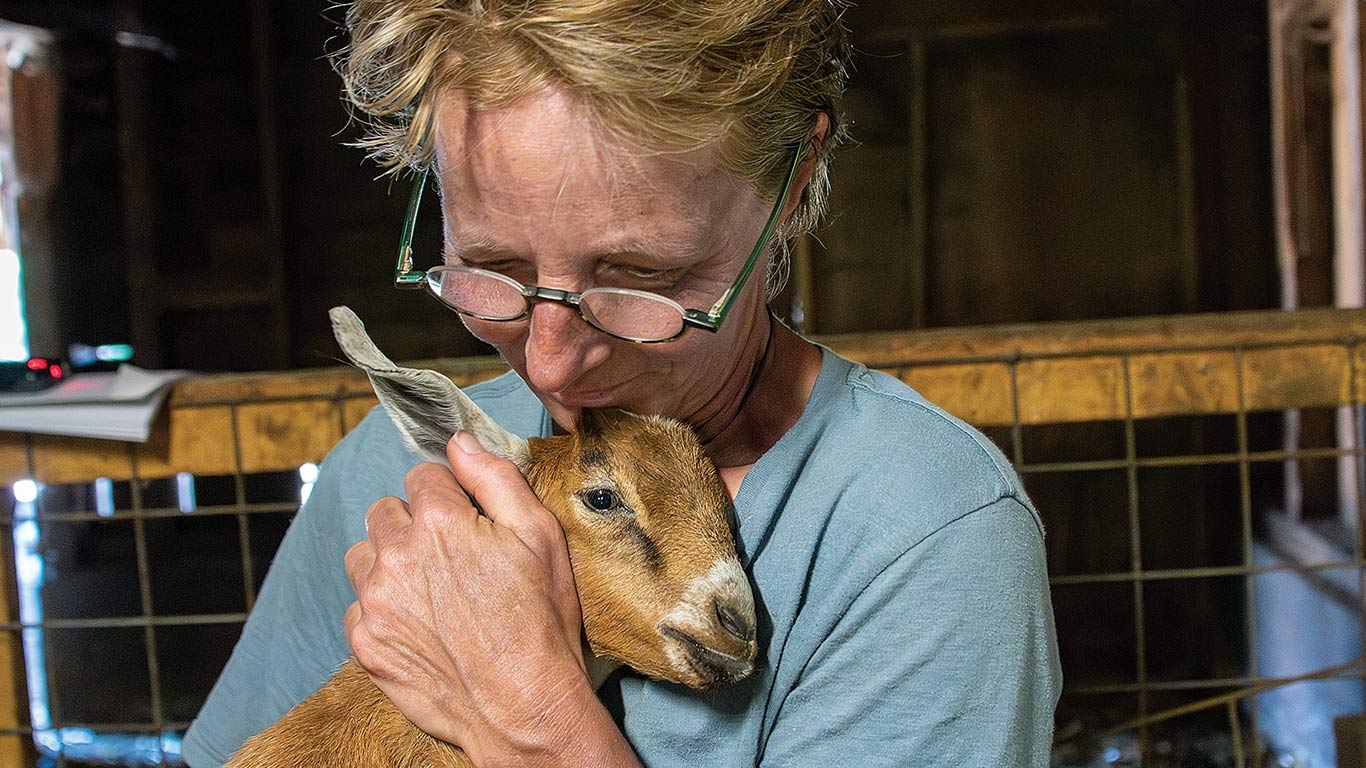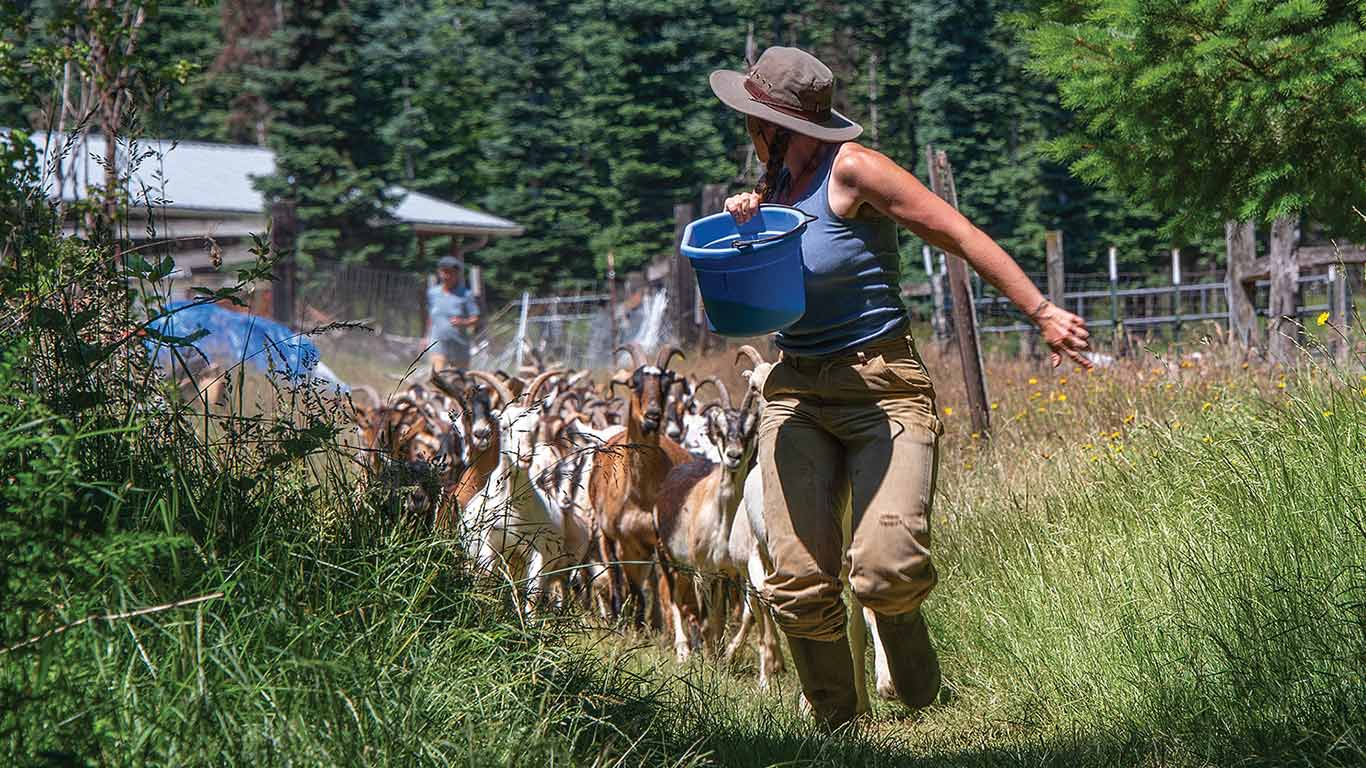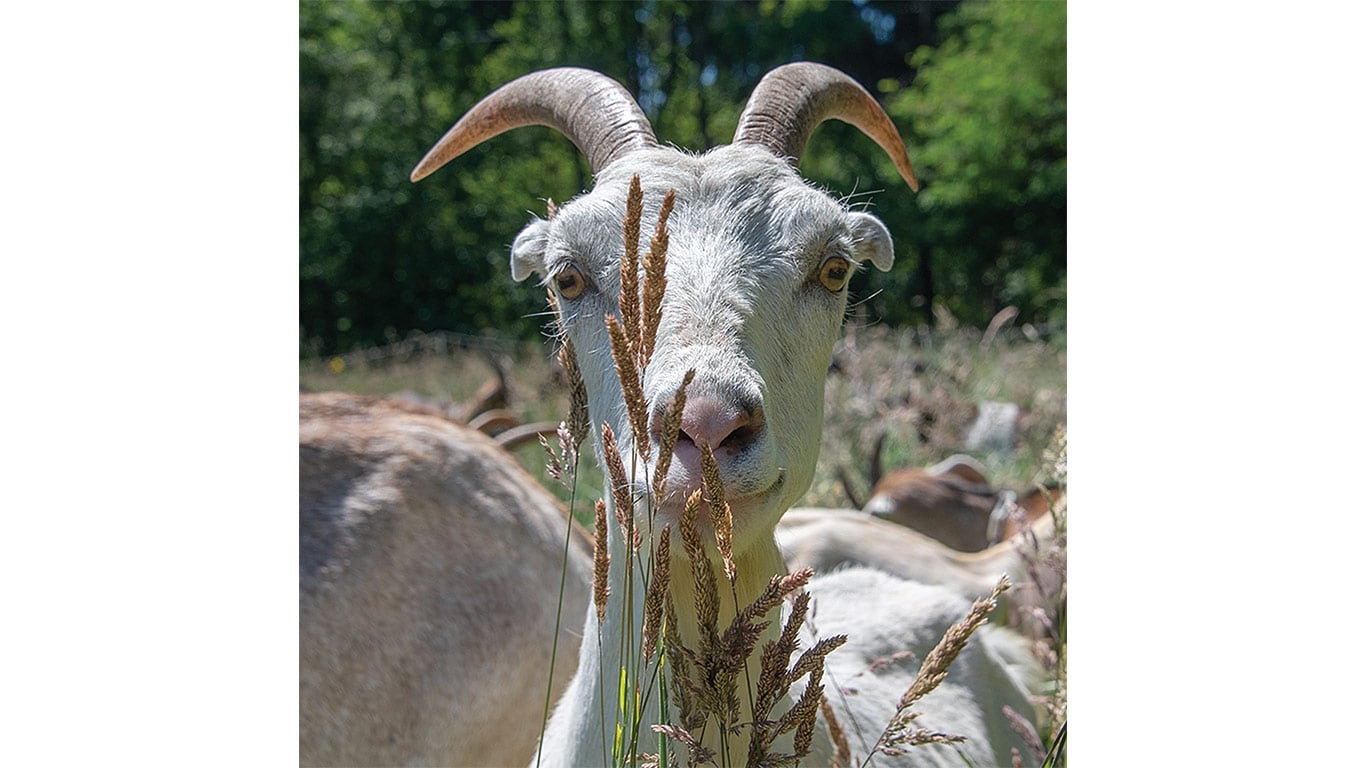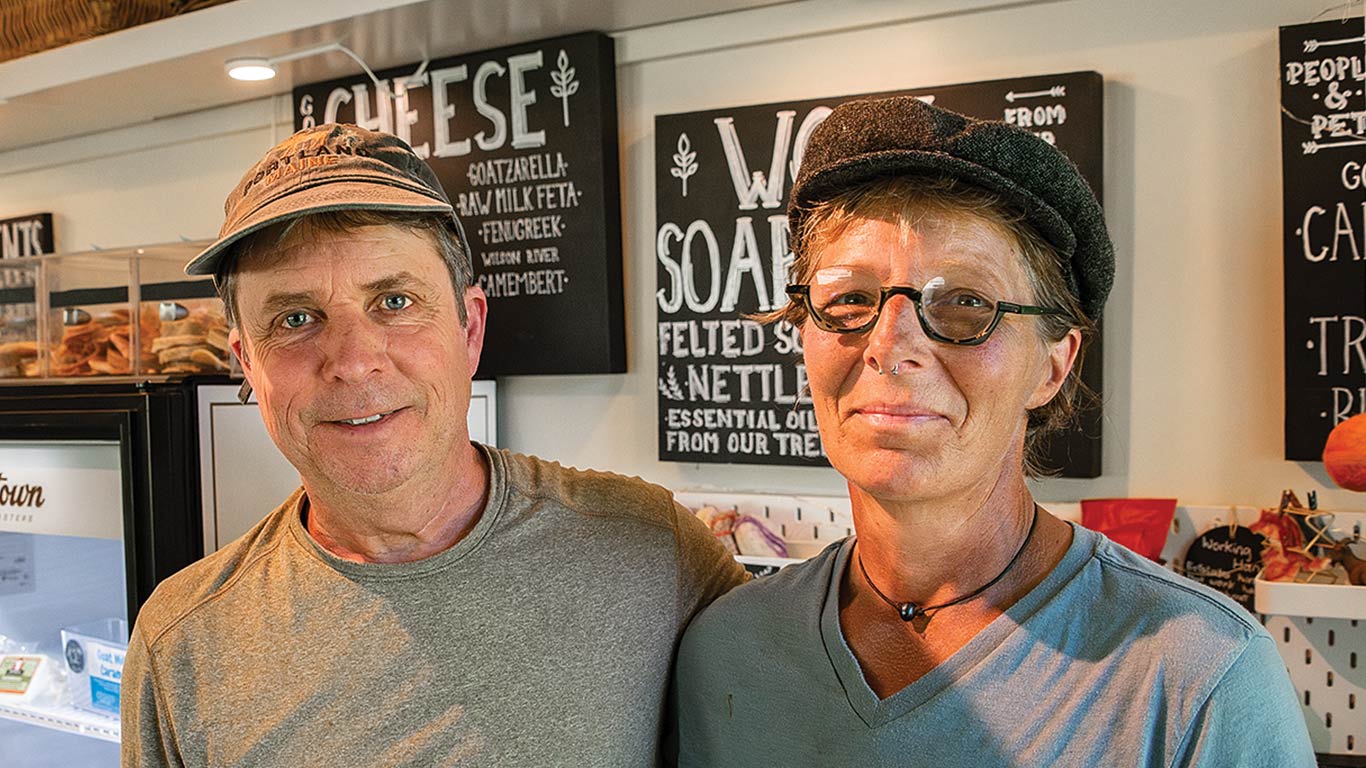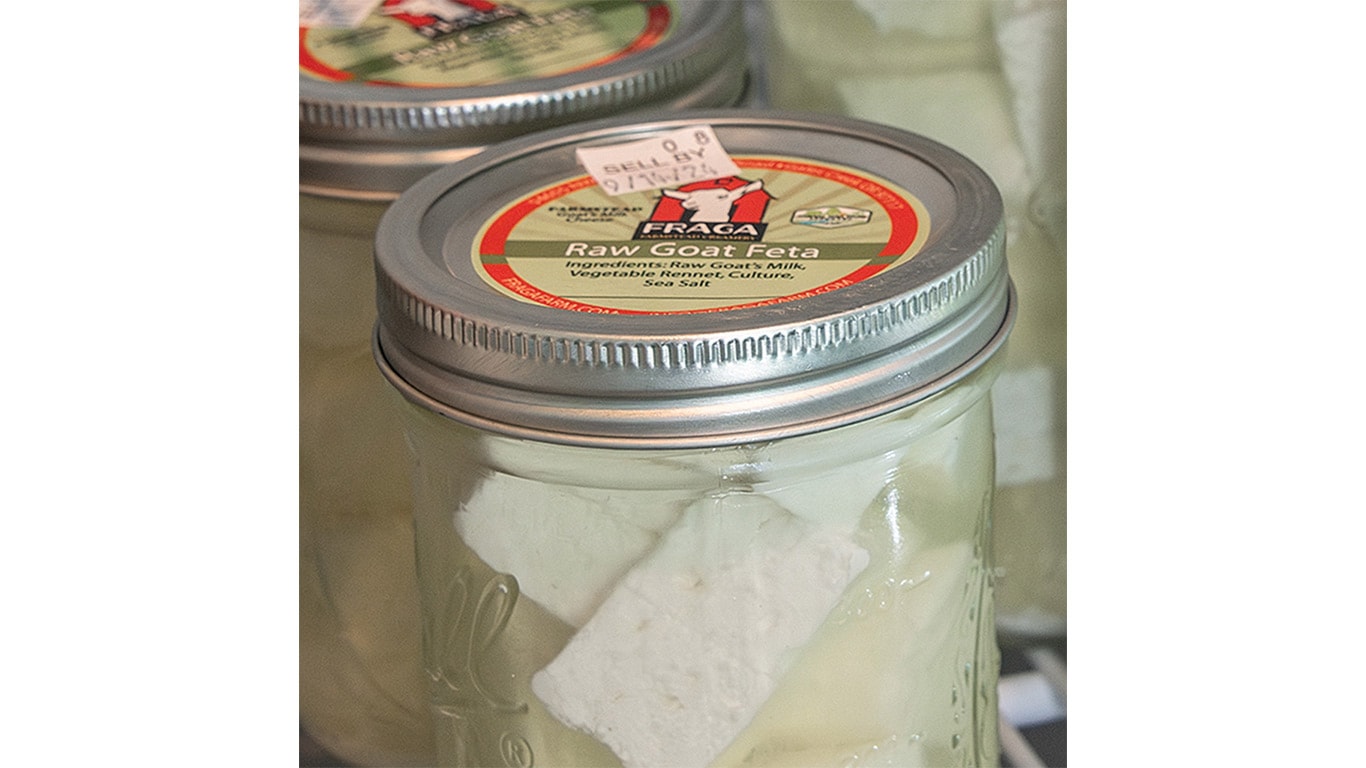Agriculture, Farm Operation September 01, 2025
Lush Life
At Fraga Farm, goat milk is the answer, from cheese to chapped hands.
by Steve Werblow
Things are going pretty smoothly at Fraga Farm—literally—with a growing line of skin balm and solid lotion sticks made from the milk of 72 Nubian goat crosses. The lucky goats live on lush meadows outside the little town of Gales Creek, Oregon.
Beauty care represents an evolution on the farm. Owners Steve Monahan and Elisabeth Beuschen-Monahan bought their 33.5-acre property in 2008 as the stock market crashed. In search of a pasteurizer for the milk of their tiny herd of 9 goats, Elisabeth, who goes by Lise, came across a family willing to sell not only their equipment, but a larger herd and their entire cheese business. The Monahans jumped in with both feet, commuting two hours each way to the original Fraga Farm while preparing their own tattered barn to accommodate their newly acquired machinery.
The Monahans moved the goats and dairy to Gales Creek, but kept the Fraga name and continued making cheese to sell on their farm and at farmers' markets. But they realized their cheese was confining them to limited margins.
Above. Hannah Gittler runs goats to a new pasture. Fraga Farm goats are Animal Welfare Approved by A Greener World. Steven and Elisabeth in their retail space. Though balms have become big, Fraga Farm cheese is still a good seller.
Luxury. Adding goat milk caramel to their lineup sparked a key realization about shoppers.
"I noticed when we started making caramel, people will pay more for a treat than for a staple," Lise says. "They will spend $3 for a tiny piece of caramel, but they won't spend $6 on a piece of cheese."
The caramel also drew on another of the Monahans' special resources: a stream of interns hired through colleges and the Worldwide Opportunities on Organic Farms (WOOF), many of whom share ideas for new products.
A WOOFer from Mexico introduced them to caramel making, and another WOOFer, who was a chef in Honduras, helped them refine the recipe. Yet another intern named Perla taught them to make organic soaps and cosmetics.
Beauty care products slid smoothly into the operation.
"We realized it complements our products really nicely," says Lise. "We can make something that is far more nutritious to the skin than ultra-processed soap and cosmetics, and more valuable. We can source our ingredients in a way that is responsible, and people can end up with a product that is so much better."
People are also willing to splurge a little for luxe skin care. At an average annual use rate of 10 bars of soap, the difference between enjoying lush bars of handmade goat milk soap and scrubbing with commercial bars is about $30 per year, Lise notes.
A grant from the Pacific Coast Coalition-Dairy Business Innovation Institute (PCC-DBII) helped the Monahans develop dry lotions and balms, research ingredients with proven health benefits, and develop and trial new formulas.
Body care also fit the farm.
"There's no way for us to scale up with cheese because we would have to have more and more goats, more manure, more kids to place," Lise says. "To scale with soap and body care products made more sense for us."
Fraga balms and dry lotions are made from freeze-dried goat milk. That allows the Monahans and employee Michael Marach to keep producing through the winter when the herd is dry.
They also added to Fraga Farm's enthusiastic customer base.
"We have a lot of farmers and chefs that use our hand balm, and we have a firearms instructor who loves it because he gets calluses from recoil," Lise says.
Body care products also align with the Monahans' ethics and growing sales via fragafarm.com.
"I'm very critical of the consumptive lifestyle," says Lise. "I'm not wanting to just make something that sells because I think there's already too much. So if I can replace a 12-ounce bottle of lotion with a little, biodegradable stick, it means something. It's also light and it ships easily, so we can afford to retail it.
"And people are so excited about it—it's awesome," she adds. "The enthusiasm people bring reminds you that what we're doing is actually really cool." ‡
Read More

AGRICULTURE, EDUCATION
Pigs Bulk up on Wheat
Research shows wheat makes great swine feed.
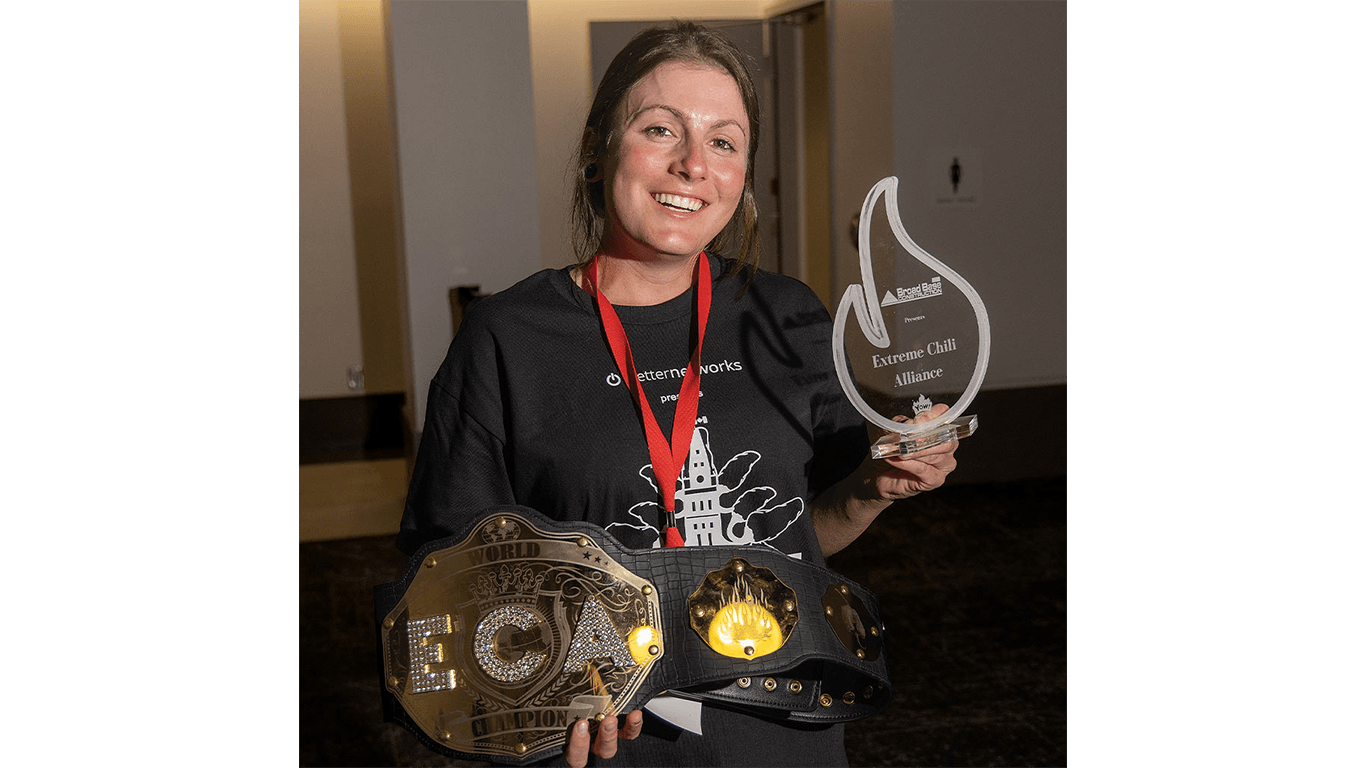
AGRICULTURE, SPECIALTY/NICHE
Last One Standing
Pushing through the pain to claim the Extreme Chili Alliance Belt Match.

